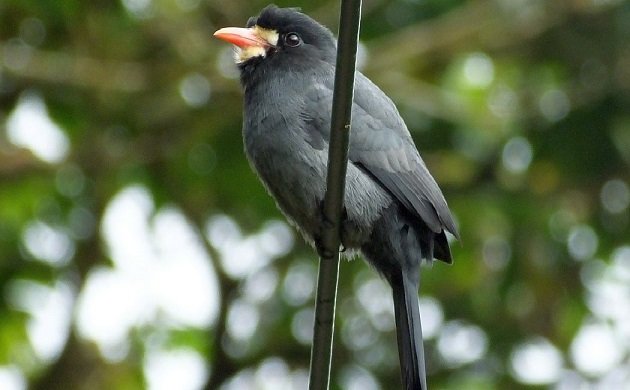
In Costa Rica, our July birding news usually consists of interesting sightings during the mid-summer tours. Which tours saw the most roosting owls? Did Cope have another site for nesting Great Potoo?
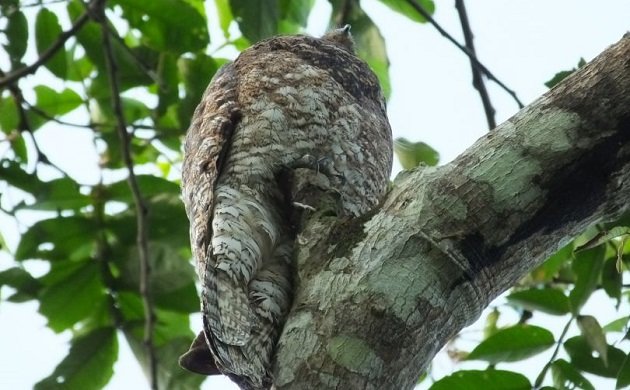
This odd nocturnal creature is around the same size as a Barred Owl.
What has Chambito been seeing in Cano Negro? Is there a seeding patch of bamboo I can visit? How about sites for Snowcap? Where can I see Cabanis’s Ground-Sparrow followed by a fantastic meal? These and other important birding related questions come to mind and during a normal July, I would be personally and actively helping answer them. In a normal July,I might be looking for Oilbirds in Monteverde, scanning for seabirds at Puntarenas, steadily birding forward to add one year bird after another.

I savor the timeless experience of scanning these tropical waves for storm-petrels and lost jaegers.
Of course, unless you live on Venus, we all know that this year is far from normal and so is the birding news. No tours means much less birding, especially on my part and with further restrictions to movement having been recently declared in Costa Rica, birding outside of the neighborhood has come to a full stop. I’m not sure how long the new restrictions will last but I don’t expect them to be lifted anytime soon. Nevertheless, although Costa Rica might be a small place in terms of land area, it’s a mega place in terms of diverse habitats and subsequent biodiversity. This means that while I hear the daily calls of Blue Grosbeaks and Crested Bobwhites from my window, other local birders are seeing everything from Black-cowled Orioles to rare Tiny Hawks! Some local guides and birders have worked on their own birding projects, others have seen many a cool bird at and near their homes. Check it out:
Juvenile Tiny Hawk Show in Sarapiqui
Local guide and birder David Mora Vargas has been spending much of his time at his family’s farm in the Sarapiqui lowlands. With around 400 species recorded for the area, yeah, it’s where we might all like to quarantine for a bit! As expected, he has seen a lot including expected trogons, the uncommon White-fronted Nunbird, equally uncommon Snowy Cotinga, and impressive King Vulture. However, the bird that has taken the Coronavirus cake has been a juvenile Tiny Hawk. Although this robin-sized raptor occurs in quite a few parts of Costa Rica, you would never ever know it. Solitary, naturally sparse, and stealthy, these deadly mini-stalkers are rarely seen and can catch and escape with a tanager right under your birding nose (once, while birding with 10 people, I was the only person who saw one fly off with a tanager).

Nunbirds
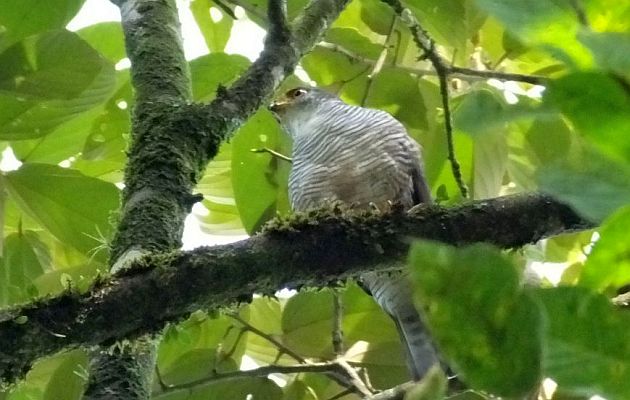
An adult Tiny Hawk from another day and place.
The Tiny Hawk at David’s place has been far more cooperative. As it learns to hunt and live on its own, the young bird has taken up residence in a tree right in front of the farm. Thanks to that bird’s choice of hunting grounds and David having plenty of time to watch it, he has documented the bird chasing everything from motmots to large woodpeckers as well as occasional visits from the parents. Even better, a second juvenile showed up just the other day!
A few other local birding guides have also had the chance to make a socially distanced visit and see this local feathered celebrity. A friend of mine, Juan Diego Vargas also made a fun video about the visit. Speaking of Juan Diego, this normally busy bird guide has also set up an exciting virtual birding tour that makes it possible to watch and learn about birds of the Costa Rican Caribbean lowlands during a live, 40 minute session.
Las Arrieras Nature Reserve
At another site in the northern Caribbean lowlands, another local birder has been doing bird counts at his family’ private reserve, Las Arrieras. Named after the Army Ants that are often seen in that area, David Segura has been documenting an expected large number of bird species (check put the eBird list). He has been particularly interested in the numbers and types of birds that make altitudinal migrations from higher elevations to the lowland forests of the reserve.
A Video of the Endemic and Near Endemic Birds of Costa Rica
Want to see a high quality video showing 53 species only be found in Costa Rica and adjacent western Panama? Birding and naturalist guide Andres Martin Chavez Rojas, also locally known as “Socio”, and as the Endemic Bird Expert Costa Rica, has crafted an excellent compilation of video footage showing such birds as Turquoise Cotinga, Fiery-billed Aracari, and other endemic and near endemic species. It goes without saying that purchasing this video is an excellent way to support a local birder and guide who has had his business put on hold during the pandemic.
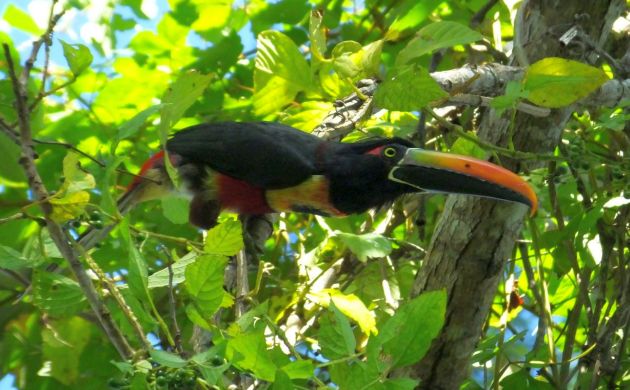
Fiery-billed Aracari
A Fantastic Day of 200 Plus Species
As a reminder that Costa Rica is fantastic birding, even during the depth of a pandemic, local birding guide Johan Fernandez had more than 200 species during just 8 hours of birding in a small area. While birding the rainforests of Portasol in southern Costa Rica on July 11th, he found an incredible 18 species of hummingbirds, 17 species of raptors and lots more! Check out this bird tasty eBird list.
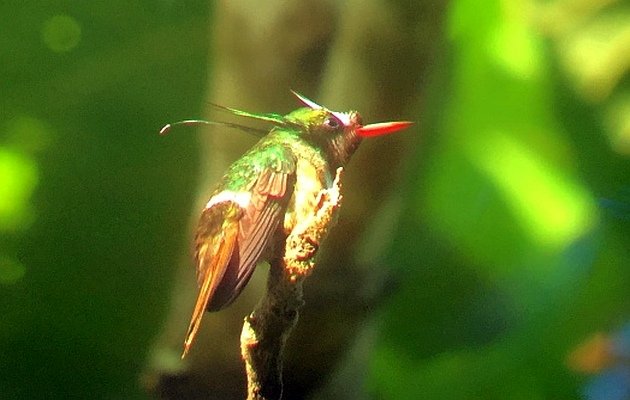
The exquisite White-crested Coquette was one of the hummingbird species.
Trip to Cocos Island
Some local birders have gone on a trip to one of Costa Rica’s most remote and exciting destinations, Cocos Island. Located half way to the Galapagos Islands, it takes a 36 hour boat ride to get there. During that ride, you can expect some pretty nice pelagics, including chances at the amazing Swallow-tailed Gull, a Galapagos endemic that may visit the boat at night. As I write, world birder Pirjo Laasko, Serge Arias of Costa Rica Birding and Lisa Erb from Rancho Naturalista are out there seeing amazing stuff, I can’t wait to see their pictures! On an exciting note, Serge is there in part to scout out possibilities for arranging future trips to Cocos for visiting birders.
What I Have Been Up To
As for myself, in addition to being entertained on a daily basis by the whistles of Spot-bellied Bobwhite and the gurgling song of Blue Grosbeak, I also have daily flyovers of four parrot and parakeet species, calling Gray Hawks, Brown Jays, and other typical species of the neighborhood. Once in a while, I put the scope on the grosbeak and bobwhite. Both are on the other side of a wall, the grosbeak singing from a medium-sized lone tree, the quail calling from a dirt mound. Unfortunately, both birds also live in a zone that s undergoing construction. They share this doomed little piece of green grass and brown soil with Eastern Meadowlarks and occasional Southern Lapwings. Despite the constant noise of tractors and dump trucks, they insist on survival and sing on. Like a spy or avian investigator, I can scope them right through the front door, watch them at will.
I also find entertainment by way of the Cornell Lab of Ornithology Birds of the World. With all of the birds of the world at my touch, it’s hard to stay away from this tome of digital information. I have found myself listening to babbler songs and wondering which ones I may have heard in the distant forests of Thailand. I find myself mindblown by images of birds like the Crested Satinbird because it just looks unreal. And it also has a cool name. And it’s like a mutant manakin of Papuan lands (!).
It’s such a great resource, I can go over woodcreeper songs, test myself to see which vocalizations I still remember from the ridiculously diverse rainforests of Tambopata, Peru. It’s fun to go from one bird family to the next or to pick out the coolest bird in some random avian family, or try and learn the hummingbirds (all 300 many plus of them). If you are really into birds, I highly recommend it. If you are a world birder, it’s a must. If you want to get lost in birds, it’s also a must. It’s great but never compares to the real birding thing. On one fine day, the pandemic will end, we will have parties and the birding will be fantastic.











Hi Pat, lots of good stuff here! I don’t see a link for getting Socio’s video of Costa Rica and Panama endemics? Can you email it to me? I’m not sure I’ll see your reply here. thanks, and all the best to you!
@Mary Ann- Sorry, I put a link to his Facebook page, he can be contacted there.